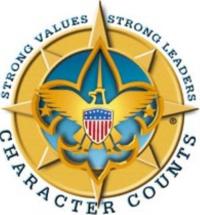 One of the hallmarks of Scouting that sets it apart from other youth activities is its emphasis on youth leadership. Boys form their own patrols and hold elections, govern themselves within the framework of Scouting, decide and plan their own activities, and are generally supposed to be running the show, with adults in the background.
One of the hallmarks of Scouting that sets it apart from other youth activities is its emphasis on youth leadership. Boys form their own patrols and hold elections, govern themselves within the framework of Scouting, decide and plan their own activities, and are generally supposed to be running the show, with adults in the background.
Of course, there are very few boys who are completely capable  of doing all this in a vacuum, let alone an entire troop’s worth. Scouting has always had adult supervision to coach and mentor the youth leaders, all the way from Baden-Powell’s vision, through “Green Bar” Bill Hillcourt’s patrol method resources, to today’s youth leadership training.
Yes, our boys can be very bright, and can surprise us sometimes with how well they seem to be doing on their own, but without adults in the picture, we would not have the Scouting program as we know it.
A recent post in the CNN Money/Fortune Secrets of Growth blog by Doreen Lorenzo titled Are we living in a post-CEO world? discusses the growing trend of management by committee and how it is working well for many corporations. Instead of a single leader, the organization’s top leaders collaborate on the direction of the company – very much the way our boys do via the patrol leaders’ council. The senior patrol leader heads the PLC, but the boys decide the troop’s course of action as a group.
What struck me as significant was Lorenzo’s reference to how the founders of Facebook and Google chose to organize their companies at the start. Larry Page and Sergey Brin were the idea guys, the programming geniuses, at Google, but they realized that they needed some help in the executive suite and hired an older executive, Eric Schmidt, to mind the business end of things. Mark Zuckerberg likewise hired Sheryl Sandberg as chief operating officer at Facebook, since he was the “guru” with the ideas but without a firm grounding in management.
Our boys are the gurus of the boys’ world. They know how to do the things that boys do, but don’t really have the experience in the organizational end of things. As Scoutmaster Clarke Green recently reminded us, “boys plan at the speed of thought. If they think it, it’s done. Let’s move on.” The Scoutmaster is needed to put a reality check on their plans – not to discourage them, but to help them think their plans through and help them realize the desired outcome, whether it be tying knots at a troop meeting or going on a weekend canoe hike. And the committee is here to help them with the arrangements and give them the resources that they ask for.
Next time you think your troop is a rudderless ship with nobody at the helm, make sure your youth leadership has the support and guidance they need to make realistic plans and help to see them through.
Postscript: When searching for a graphic to accompany this article, 15 of the first 18 hits that Google Images returned contained Boy Scouting references. Looks like we’re doing the right thing!
This post first appeared on Bobwhite Blather.


